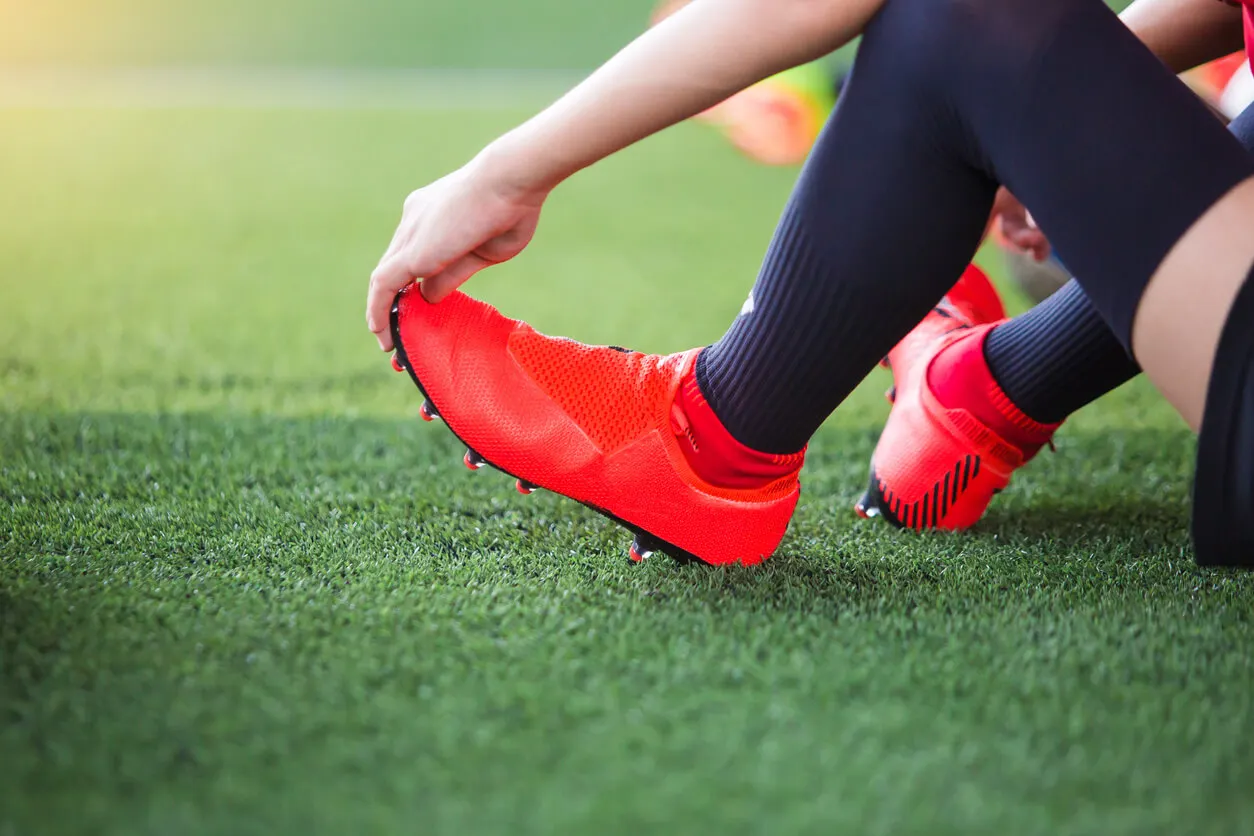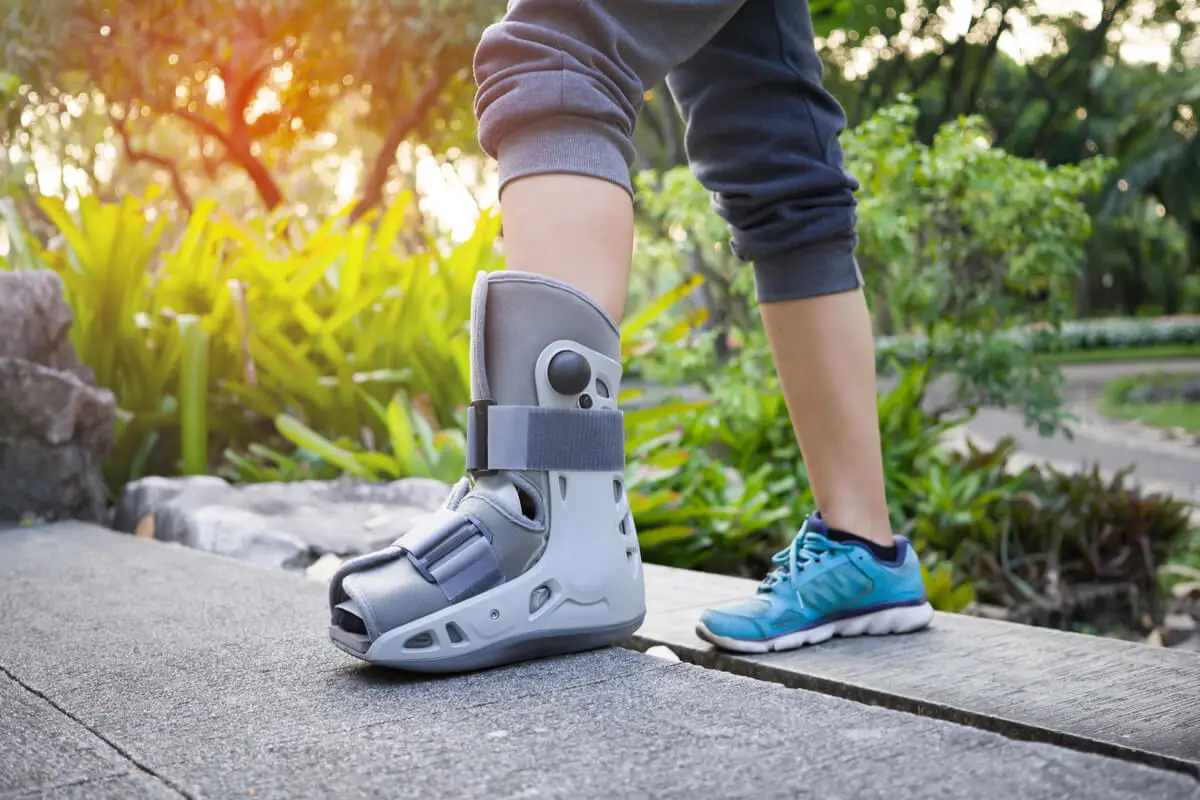Peroneal Tendonitis: Causes, Symptoms, Treatment and More


Written and verified by the doctor Maryel Alvarado Nieto
The ankle is one of the joints that we use most frequently since it allows movement. It’s made up of several structures that provide great stability and movement. Injuries to the ankle are quite frequent, and peroneal tendonitis is one of the conditions that triggers pain here.
A tendon is a band of tissue rich in collagen and elastic fibers that joins a muscle to a bone. This is in order to transmit the force of contraction to trigger movement. Tendinitis is the inflammation of a tendon. It can be acute, subacute, or chronic.
Anatomy of the peroneals
The peroneals are muscles located on the lateral aspect of the leg. There are two:
- The peroneus lateralis longus, which starts from the most proximal portion of the fibula.
- The peroneus lateralis brevis, which starts from the middle third of the same bone, which is also called fibula.
Occasionally an accessory muscle known as peroneus quartus appears.
The peroneal muscles descend along the posterolateral aspect of the leg until reaching a bony prominence in the ankle: the external malleolus, which they surround behind through the retro malleolar groove. Both peroneals share a synovial sheath that confers them to the necessary lubrication to diminish the friction of the movement.
After bordering the external malleolus, the peroneals separate, acquiring each one an individual synovial sheath. The peroneus longus lateralis passes under the foot to insert at the base of the first metatarsal. While the peroneus lateralis brevis runs along the lateral border of the foot to insert on the fifth metatarsal.
Important anatomical variations in the case of peroneal tendinitis
In addition to the presence of an accessory peroneus, there are individual variations that are related to a greater predisposition to the development of peroneal tendinitis. Among the various morphological alterations are the following:
- Changes in the shape and depth of the retromalleolar sulcus.
- Lower location of the lateral peroneus brevis muscle.
- Hypertrophy of the peroneal tubercle, which is a bony prominence of the calcaneus.
- Alterations in ankle alignment, such as varus hindfoot or pes cavus.
- A prominent plantar arch.

We think you may also enjoy reading this article: Tendonitis in the Shoulder: Symptoms, Causes, and Treatment
Conditions that are associated with an increased risk of tendinopathy
Although peroneal tendinitis is rare as an isolated entity, it’s common for the inflammatory process to also affect the synovial sheath, constituting tenosynovitis. There are risk factors that help to trigger these problems:
- Rheumatoid arthritis
- Psoriasis
- Hyperparathyroidism
- Diabetic neuropathy
- Calcaneal fracture
What are the causes of peroneal tendinitis?
The mechanism that usually causes tendon inflammation responds to the articular mechanics itself. The affectation of the peroneal tendons is caused by the microtrauma that generates a repetitive movement, since constant friction is produced.
In the same way, it’s more common that posterior peroneal tendinitis occurs after a period of physical inactivity. For this reason, this disorder affects runners and dancers more than the general population.
Even so, among the predisposing causes, the following can be mentioned:
- The use of inappropriate footwear.
- Overload due to inadequate or prolonged training.
- The absence of a warm-up prior to exercise.
- Pre-existing ankle injuries, including sprains, fractures, and chronic joint instability.
Direct trauma to the ankle also leads to the development of tendon injuries.
The symptoms of peroneal tendinopathy
The symptoms depend on the degree of involvement and the time of evolution of the tendinopathy, which can be acute, subacute, or chronic. It’s considered to be acute when the signs have less than 2 weeks of having appeared.
It’s subacute between 2 and 6 weeks, and it’s considered chronic when it lasts more than 6 weeks.
Ankle pain
The most frequent symptom is pain, which is predominantly located in the posterior part of the external malleolus. In acute lesions, it may even follow the path of the affected tendon. The pain of tendinitis is characterized by the fact that it improves with rest and worsens with movement.
Other symptoms
In addition to the painful sensation, various alterations may appear:
- Swelling on the outer aspect of the ankle.
- Warmth to the touch in the area posterior to the external malleolus.
- Instability of the joint.
How is peroneal tendinitis diagnosed?
As this is a rare contidion, it isn’t usually the first diagnostic option to be considered, and it’s often underdiagnosed. It’s also not uncommon to confuse peroneal tendinitis with an ankle sprain.
It’s important to establish the time of evolution and the characteristics of the symptoms. In addition, it’s necessary to know the level, type, and frequency of physical activity, the conditions and underlying pathologies, and also any traumatic or surgical history.
Physical examination
After gathering all the information concerning the clinical picture, it is of vital importance to perform a thorough physical examination. The examination allows the identification of alterations in the ankle and any condition predisposing to the injury.
Among the clinical findings are the following:
- Exacerbation of pain with movement
- Painful palpation in the tendon tracts
- Tendons that feel thickened and indurated
- Observation of any morphological alteration of the foot
Complementary studies that help in the diagnosis
Imaging tests are widely used. However, conventional radiography could be visualized within normal limits in the absence of bone involvement.
The study to better evaluate the alterations is computed tomography, but it doesn’t have a good resolution of the soft parts. For this reason, magnetic resonance imaging is of choice for tendons.
Similarly, ultrasonography can be requested. Although it’s a useful tool, it has the caveat of being dependent on the skill of the operating sonographer.
What treatment options are available?
Conservative treatment is usually sufficient to improve pain while allowing tissue regeneration. However, in severe chronic tendinitis and in refractoriness to the conservative approach, surgery becomes a viable option.
Conservative management of peroneal tendinitis
Conservative management includes the following:
- Treatment of pain with nonsteroidal anti-inflammatory drugs (NSAIDs)
- Rest of the joint in the initial phase
- Cryotherapy applied to the ankle
- Elevation of the lower limb
- Immobilization by means of a plaster splint or boot
- Rehabilitation with physical therapy
At present, steroid infiltration is controversial, because due to the inflammatory process, the tendon puncture can cause tearing of the fibers, complicating the picture.

Like this article? You may also like to read: Resting Leg Pain: 7 Possible Causes and What to Do for Relief
Surgical approach to peroneal tendinitis
Although surgery is a useful therapeutic option, it should be relegated to severe chronic cases and to those patients refractory to conservative treatment or who present recurrences. The surgical approach should also include the correction of diagnosed anatomical abnormalities.
Prognosis of peroneal tendinitis
Generally, when correctly diagnosed and effectively treated, tendon regeneration is good. Recovery is more rapid in acute cases than in chronic cases, but equally a hasty approach should not be taken.
Rehabilitation is paramount to complete treatment, both conservative and surgical, as it allows for strengthening and toning of the peroneal muscles and their tendons. Physical therapy includes eccentric, proprioceptive, and stretching exercises.
All cited sources were thoroughly reviewed by our team to ensure their quality, reliability, currency, and validity. The bibliography of this article was considered reliable and of academic or scientific accuracy.
- Dalmau, M.; Alcolea, E.; Tratamiento Conservador de la Tendinopatía de los Peroneos;
- Heckman, D.; Reddy, S.; Pedowitz, D.; Wagner, K.; Parekh, S.; Tratamiento Quirúrgico de los Trastornos de los Tendones Peroneos; The Journal of Bone and Joints Surgery; 2008
- Contreras, J.; Tendinopatía Inflamatoria de los Tendones Peroneos;
- Zaragoza, K.; Fernández, S.; Ligamentos y Tendones del Tobillo: Anatomía y Afecciones más Frecuentes Analizadas mediante Resonancia Magnética; Anales de Radiología México; 2 81 – 94; 2013
- Comité de Educación Pública; Lesiones del Tendón Peroneo; American College of Foot and Ankle Surgeons; 2006
- Bretón, M.; Rendón, L.; Inestabilidad Lateral del Tobillo Tratada con Broström-Gould. Evaluación de Satisfacción y Funcionalidad; Anales Médicos; 62 (1) 15 – 21; 2017
This text is provided for informational purposes only and does not replace consultation with a professional. If in doubt, consult your specialist.








